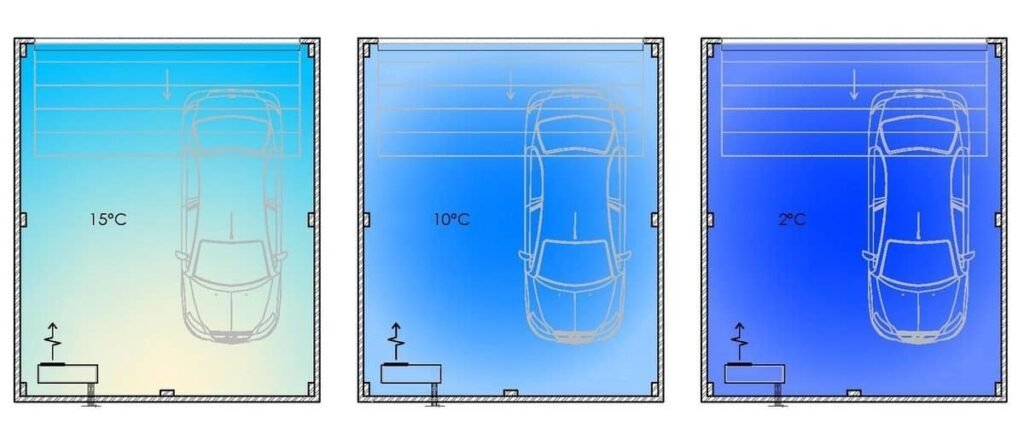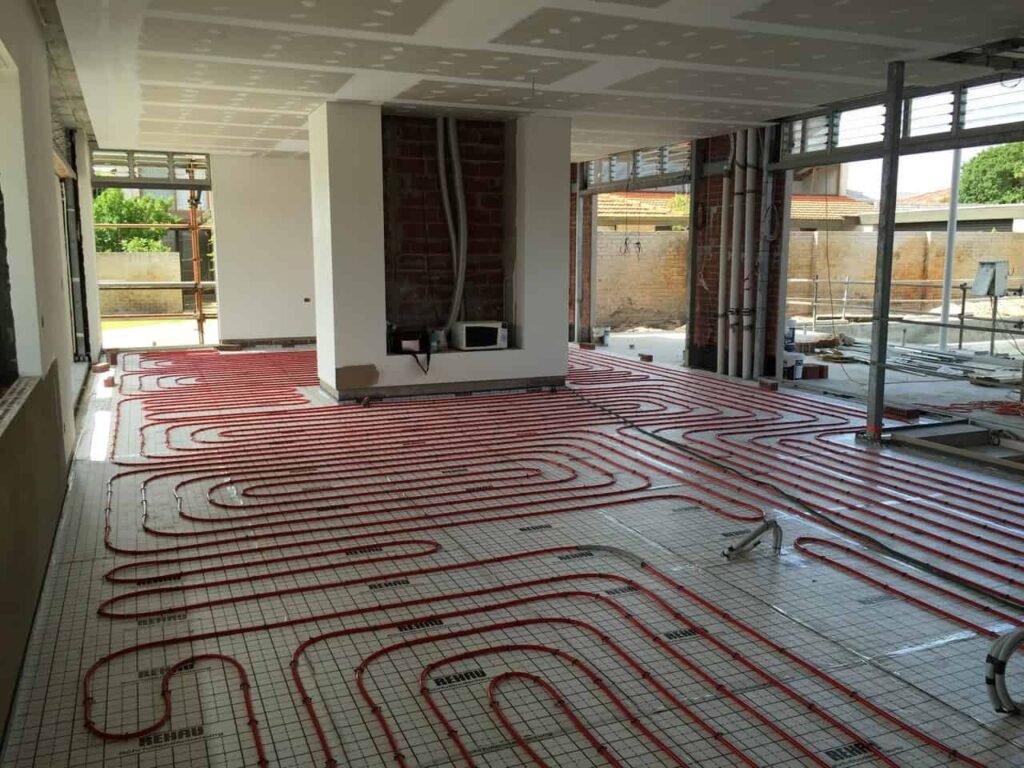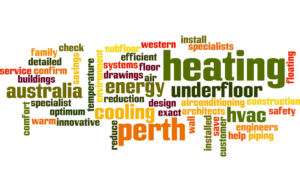When you get hydronic heating for your house, the warm water that circulates in the floor pipes (and heats up your home in winter) is often produced by a “heat pump”.
This is a machine of some size. It does some humming. And the a lot of the time, people think of hiding it somewhere: garage, store room, or even sometimes a ventilated roof space.
The thinking behind this is usually twofold:
- The heat pump is hidden from view, so it doesn’t stick out like a sore thumb, compromising the hard work put into designing an exceptional building.
- The heat pump will be protected from the elements, saving it from water, corrosion, dust, and an early demise.
This is a good idea… until you understand the physics of how a heat pump works.
Because when you do, you´d never ever do what´s essentially the same as pulling a plastic bag over your head.
Let me explain …
The air/water heat pump is based on the principle that it collects low-value energy from the air, temporarily stores it, and turns it into high-value energy that is useful.
For example, in winter it may be 10°C outside… To you and I, this is cold… but to the heat pump, this is a treasure trove of heat energy.
How a Heat Pump Works (simplified)

Picture a hydronic floor heating system is requesting heat… so the heat pump compressor turns on, compressing a batch of refrigerant that heats up to 40°C. Water from the hydronic system extracts this heat from the refrigerant, cooling it down to 35°C. The refrigerant is then decompressed (expanded), and becomes cold, say 5°C.
The heat pump then moves this 5°C refrigerant in front of its fan, and the fan starts spinning.
After a minute, the 5°C refrigerant in front of the fan has become 7°C refrigerant.
And after another minute, it’s jumped up to 10°C. This is because the air is warmer than the refrigerant – the refrigerant is collecting heat from the air.
Once again, this 10°C refrigerant is compressed, turning it into useful 40°C refrigerant, ready for transfer to the hydronic system water… and this happens on continuous basis as long as there is call for heating.
So we can see from the above process that low-value heat from the air is collected and made into high-value heat that can be used.
We must remember that the higher the air temperature, the higher the efficiency of the heat pump, as it’s easier to collect heat from 20°C air than it is from 10°C air.
This process is identical to an air conditioner condenser unit, and similar to how a fridge works (but in reverse). The heat pump is actually a complex piece of equipment that must be understood well to gain the most out of it – the explanation above is very simplified for our discussion here.
The heat pump needs to breathe…

Imagine the heat pump is enclosed in a garage. There are three walls, a roof, and a closed garage door. It’s 10°C outside, but 15°C inside the garage.
The heat pump turns on and starts collecting heat from the 15°C air at a high efficiency, from the high air temperature available.
But after 15 minutes it’s not 15°C in the garage anymore… it’s 10°C.
The heat pump keeps going though, still producing heat, but at a lower efficiency.
Another 15 minutes pass by, and it’s now 5°C in the garage. The heat pump is working harder and harder to produce the 40°C heat. It’s still keeping up with the heat demand, but is now working twice as hard to do it (lower efficiency, higher running cost).
After 40 minutes of run time, it’s 2°C inside the garage, and the heat pump is working three times as hard to produce any heat. The efficiency has drastically reduced, costing more every minute it runs.
Then someone comes home, and opens the garage door…
The 2°C air from the garage spills out the open door and is replaced with 10°C outside air, and the efficiency once again increases, and the running cost decreases.
Just like getting a breath of fresh air after having a plastic bag over your head.
Will a ventilated room provide enough air?
We’ve now established that enclosing an air/water heat pump results in poor performance. And that it’s really important that an air/water heat pump (or air-conditioner condenser) has 100% free air exchange with fresh external air always. Because it’s from this air that the heat pump collects heat energy.
But what about enclosing an air/water heat pump in a ventilated room?
It’s only marginally better than completely enclosing it, as the majority of the same air recirculates within the enclosed space.
Even an obstacle (such as a fence) closer than 1 metre from the face of fan can also result in mass air recirculation, decreasing the energy efficiency of the heat pump by up to 50%.
Compare the examples below of heat pumps outside with fences in front of them:
It’s clear that even outside, when there’s not completely free air circulation, that exhaust air from the heat pump gets sucked back in – significantly reducing the heat pump’s efficiency.
Any unit with air exchange should have the air exchange component positioned so it has 100% access to fresh air at all times. Units without air heat exchangers, such as water/water or ground/water heat pumps (i.e. water source or geothermal) can be positioned 100% internally.
Do we need to protect the heat pump from rain, dust, sunlight etc.?
You might think that covering or enclosing the unit in something will make it last longer, as it won´t become damaged by rain, rust, dust, extreme sunshine etc.
But good air/water units are designed for the outside environment: They actually make them for the outside. They are built to last in the conditions. Just like a car is made to run outside in rain and sunshine and does not need to be garaged at all times.
Making the unit work harder by enclosing it will increase the wear on the heat pump parts more (especially the compressor and fan) than letting it rain on it.
How to avoid the mistake of suffocating your heat pump
- Take care when you position the heat pump so that the exhaust air is not easily again sucked in as the supply air (short-circuiting). You can avoid this by positioning the heat pump in open area where there are no obstacles within 2 metres (minimum) in front of the exhaust fan.
- Plan the position of the heat pump when designing the building… otherwise it will probably end up shoved into a corner somewhere with poor air circulation.
- If the heat pump does need to be inside, within a plant room for example, use a purpose-built internal heat pump which is ducted.




